During the walking tour of Midtown Manhattan there were many interesting buildings and sites to view. One of my select favorites was the St. Bartholomew’s Church. Out of the many exciting structures that exist, this is one of my favorites because of its surrounding area and it’s delicacy.
Here are some basic facts about the St. Bartholomew’s church. St. Bartholomew’s Church is located on 109 E 50th Street at Park Avenue in Manhattan, NYC. It’s architect was Bertram Goodhue and the church was completed in the year 1919. There were two extensions designed by Mayers, Murray & Phillip; the Community House, completed in 1928 and the dome in 1930. The church’s style is considered Byzantine and Romanesque. St. Bartholomew’s is viewed as romanesque revival because of the three-door porch whose architects were McKim, Mead & White. The Community House and outdoor space is now a restaurant called “Inside Park.” The church also became a New York City Landmark in 1967.
One of the reasons why St. Bart’s (short name) is one of my favorite structures is they way it speaks to its location. Sometimes the location of a church can feel strange and out place if it is placed in between other structure’s outside if it’s style. However, St. Barts is located between many commercial and modern buildings, making it remarkable in the way it was designed to fit right in place even if a new building came along. The way the church blends right into the environment shows that the architects knew what they were doing. This could be due to the color scheme of light browns on the buildings that came in later on. Another reason on why it’s a great is because it is set onto the corner of the street. This becomes a focal point for the viewers when they tour that specific street. The surrounding buildings are large vertical skyscrapers, some of them are the GE Building and the Waldorf Astoria Hotel.
The exterior of the church provides for public space, which is a great use because people are able to enjoy the beauty while sitting, eating or relaxing. Not only does the public space provide this kind of experience, it also allows for its ornamentation to hold time. It takes awhile to actually take the church’s entire beautification from the outside.
Not only is the exterior of St. Bart’s adorned but so is the interior. When I stepped inside the church I was amazed and mesmerized. I’ve seen many churches and this is one of my favorites when it comes to the elegant embroidery of the entire interior. From the column’s made of granite to the carved wood to the stained glass dome. You actually need to stop and take a look at everything. The feeling is the true meaning of a church, peaceful, amazing and just lovely.
A church’s experience is enhanced when you can see it is the heart of the city and is a blend of the old and new. To support this statement, the church was originally built to become a major social welfare to the city and for those immigrating during the the nineteenth century. All done in support of the Vanderbilt family, this shows that the church expresses itself inside out. It is truly serving true to it’s name.

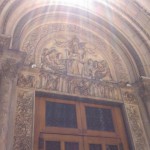
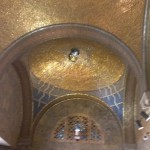
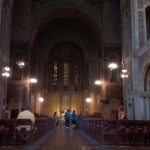
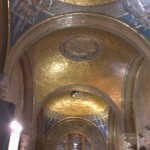
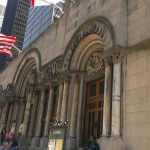




I loved the church, too. when we all went inside of the church , probably everyone felt that church was not suppost to be there because it does not match with the other buildings. however, the church shows a lot different styles mixed together such as: neo-romasque and neo-byzantine. I agree that the church is so elegant inside out that makes the church unique.